One of Vide Terra's fields of study is dedicated to the adaptation of the SuperAdobe technique to different natural and social environments. More specifically, the exploration of NATURAL WATERPROOFING solutions. The aim of this research includes the use of local resources - preferably the excess materials.
Roofs are an excellent waterproofing solution. Not only do they protect the top of the structure and add
extra insulation, but they also protect the vertical walls as well as the plaster applied on them.
The two following projects aimed at finding a roofing system for the round shape structures - domes,
which would involve the use of natural, local excess materials. So we decided to experiment
with
thatching.
arundo donax and reed
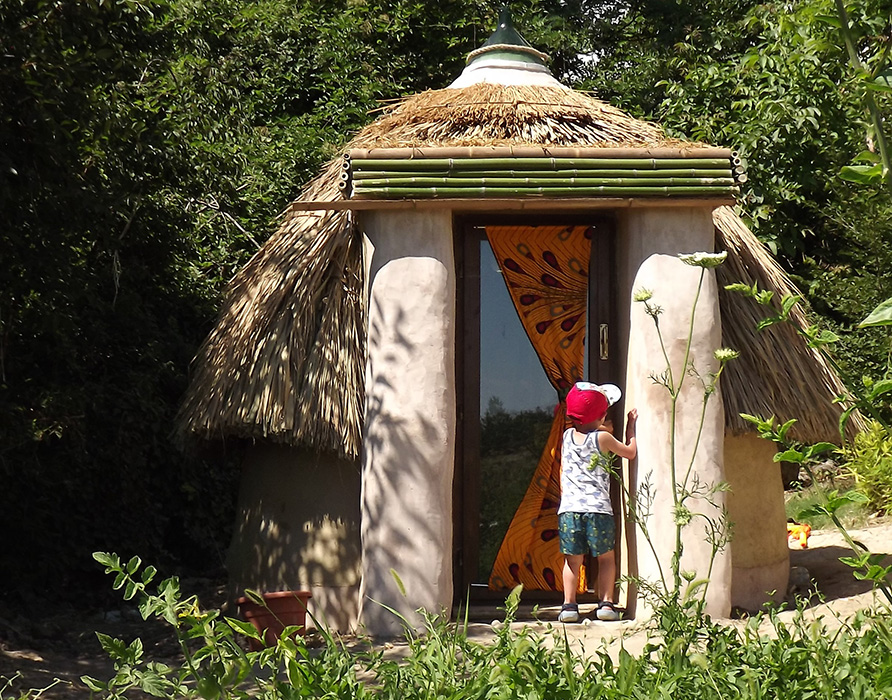

Thatching a superadobe dome requires some prior preparation such as thinking ahead about how to fix the roof to the dome. We took advantage of how the superadobe structure is made. As it is a composition of layered rammed earth bags, we sandwiched a series of 3cm tubes between the layers. The tubes were applied to pass the wires through the walls; whereas the wires served to hold a curved beam which pressed reed and arundo donax against the walls.
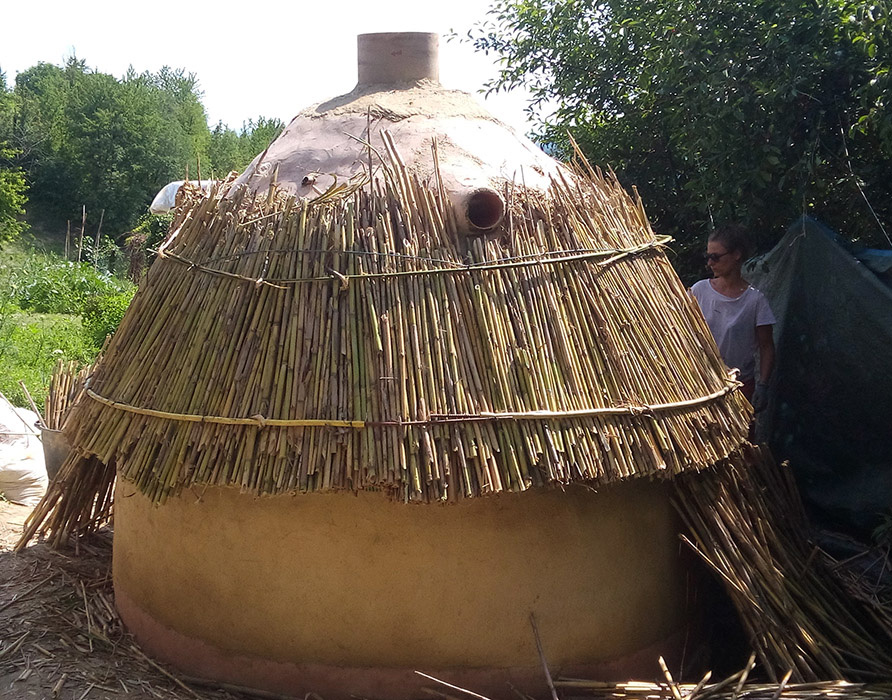


check Vide Terra's Projects page for more pictures of the finished roof
broom


The preparation strategy for this roof was slightly different from the previous R&D roofing project and after two years we noticed that this solution performed better. This time we attached short pieces of a very strong metal wire directly to the barbed wire (which as a rule is placed between the earthbags). The pieces are many and are placed close together so that they manage to grab the pressing, horizontal beam tightly.

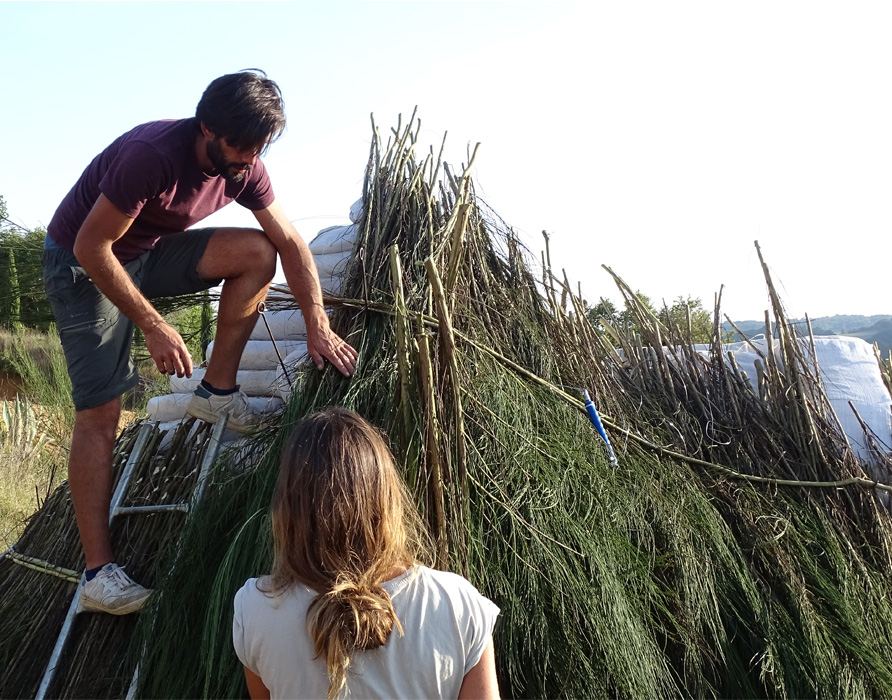
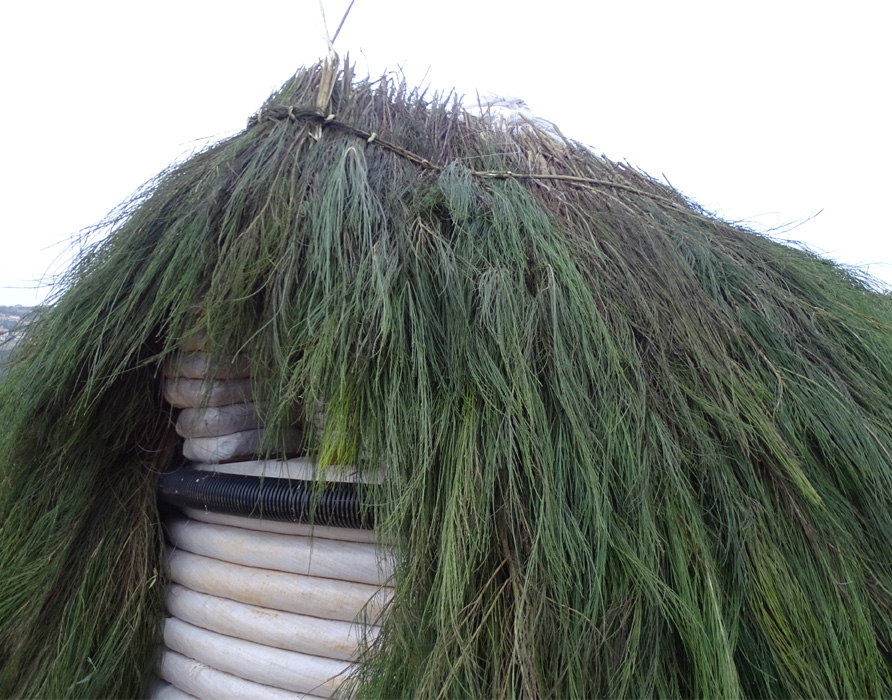
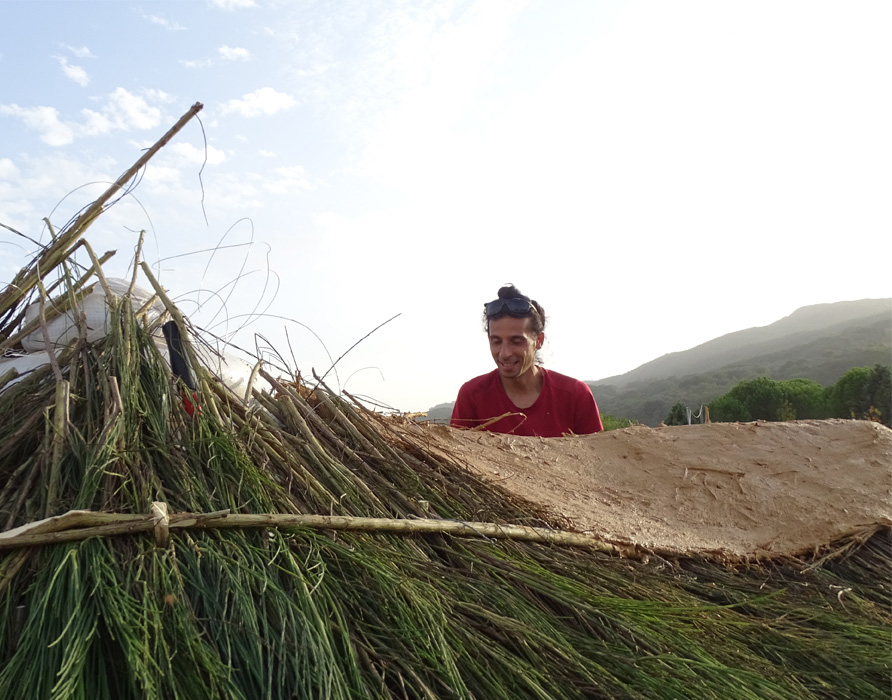

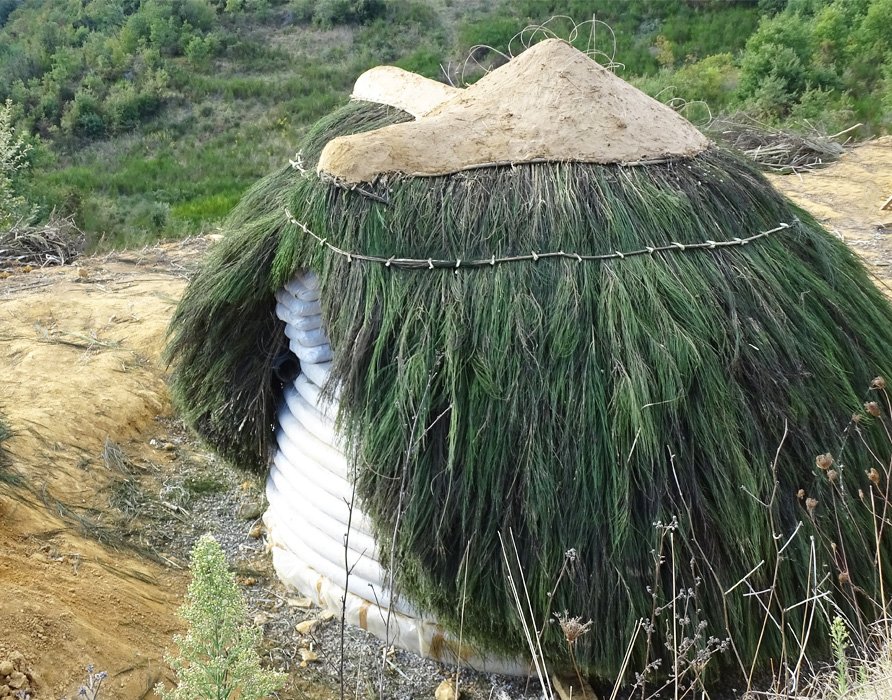
check Vide Terra's Projects page for more pictures